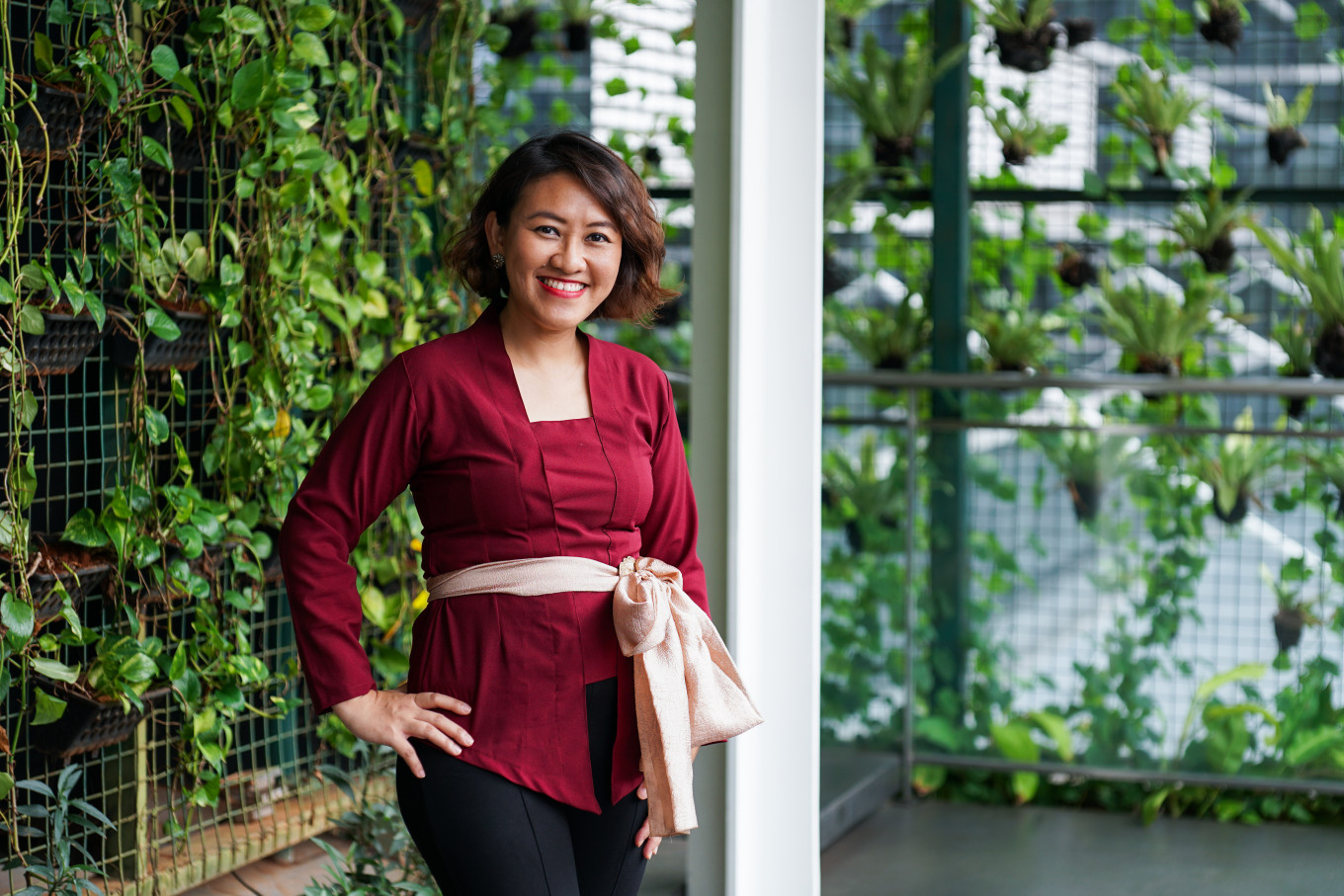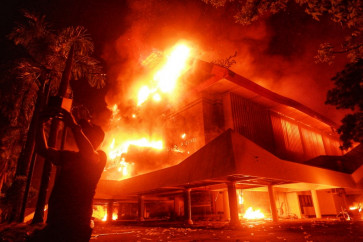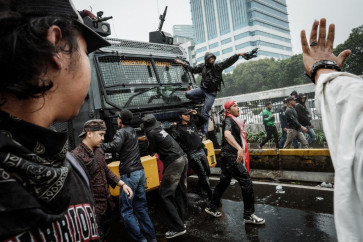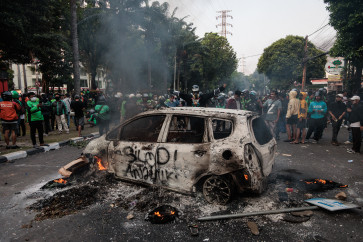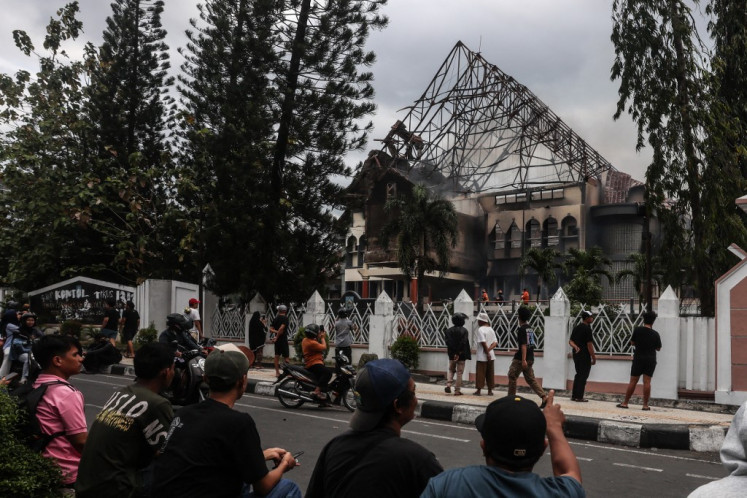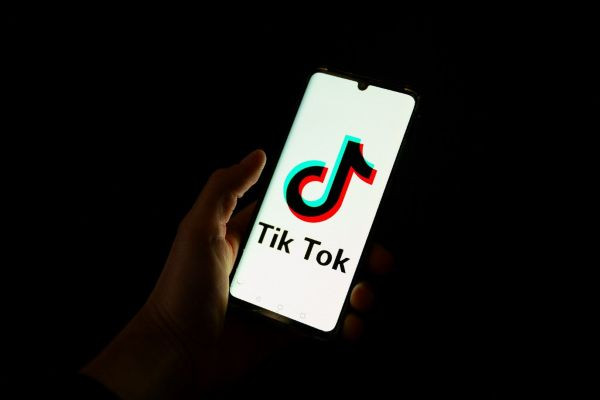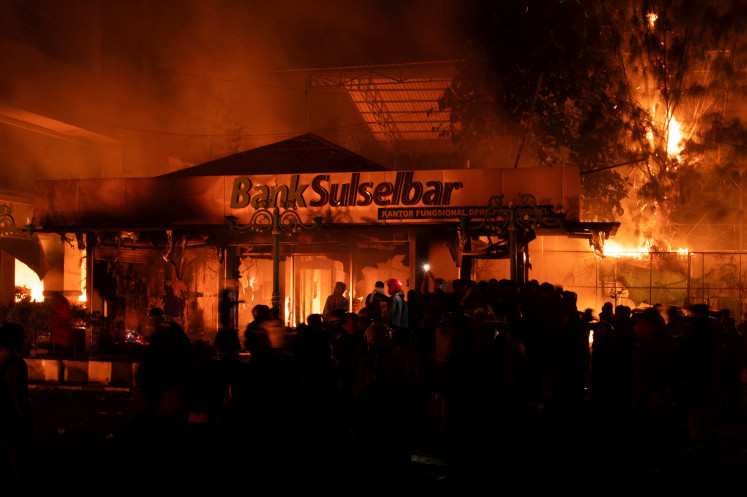Popular Reads
Top Results
Can't find what you're looking for?
View all search resultsPopular Reads
Top Results
Can't find what you're looking for?
View all search resultsBintang brews up its very own energy transition
Listed beverages company PT Multi Bintang Indonesia, well known for its Bintang beer, is working with stakeholders to raise awareness on waste management and transition to clean energy.
Change text size
Gift Premium Articles
to Anyone
M
ounting environmental problems have pushed many companies to put forward sustainability efforts to minimize the ecological impact of their products and help tackle these problems in communities.
Listed beverages company PT Multi Bintang Indonesia, well known for its Bintang beer, is working with stakeholders to raise awareness on waste management and transition to clean energy. The Jakarta Post’s Divya Karyza sat down with Multi Bintang Indonesia director of corporate affairs Ika Noviera on Jan. 27 to discuss the company’s sustainability efforts and struggle for clean power in a country still looking for direction in the energy transition.
Question: What are the challenges faced by your company in waste management?
Answer: Waste management is a crucial part of our business sustainability strategy. Multi Bintang, which is a part of The Heineken Company, has begun to assess its environmental impact in Indonesia. Understanding our business operations was the first huge challenge, because we’re dealing with a long supply chain. We need to pay close attention to, among other things, the source of our raw materials and the packaging in which our products are consumed.
Now, talking about packaging and waste management, as of today around 98 percent of all solid waste produced by the company has been successfully recycled. We are designing and implementing a return system for bottles, crates and kegs through collaboration with business partners. From these initiatives, 80 percent of our packaging was returned, recycled or reused at the end of 2021.
We are also trying to keep improving the system. For example, starting in December last year, the company is working with clean-tech startup Rekosistem to increase the scale of our used beverage product return by providing direct return channels for the public in the Greater Jakarta area. We are offering reward points for consumers who deposit Bintang or Heineken beer bottles through the available Rekosistem drop points.
At this point, we need to think about how to involve consumers in the initiative. But changing behavior is a very difficult thing to do, so we need to gain insight from partners in the waste management industry and launch a pilot program to gain data to see to what extent consumers care about recycling, for instance. There must be reciprocity between all actors involved in the waste management process, including the consumers. The challenge is how to engage with them. What’s in it for them?
To what extent do Indonesian consumers care about sustainability?
Consumers in urban areas are starting to pick up the importance of brands’ sustainability efforts. Do they know comprehensively about sustainable products? No. Do businesses have a role in educating consumers? Yes. We consider the long-term impact of our sustainability initiatives. Even though our consumers are not as environmentally conscious as consumers in the Scandinavian countries, for example, we will eventually get there. What will happen in the next 20 years if we do nothing? That is the pressure we’re having right now. Starting these sustainable efforts as early as possible is also more cost-efficient than later.
Moreover, we see more partners starting to care more about sustainable operations. When more businesses are going in that direction, it simply means that demand for such actions from consumers is already there.
How does the company strategize the transition to clean energy?
We mapped the types of energy we use and found out that thermal energy takes up 60 to 65 percent of the total energy in our daily operations. Back in 2015, we started to explore the use of biomass.
As of last year, biomass provides 64 percent of the energy needed by our factories. Now, we have the remaining 36 percent, which largely comes from electricity, provided by state-owned PLN.
Now, together with PLN, we’re trying to figure out which renewable energy options are the most cost effective for the company and which one can be available the fastest to help us achieve our target to source 100 percent of our energy from renewable sources by 2025.
What are your targets for the renewable energy mix in your company’s total energy consumption in 2023?
Our attempt to increase the renewable energy mix this year largely involves discussion with PLN. Please note that industrial utilization of renewable energy provided by PLN is considered new territory, because there has yet to be a tariff provision for industries. Moreover, there aren’t many procurement options available. These types of arrangements are decided in business-to-business negotiations.
One of the options we’ve considered is sourcing 14,000 megawatt-hours of electricity from PLN’s Cirata floating solar plant. Other options include using electricity from independent power producers, which also needs PLN’s approval.
Why the Cirata floating solar plant?
We’re willing to tap into any opportunities provided by PLN, as long as the renewable energy source is new. A lot of other companies are interested in Cirata, but our dialogue regarding the matter at the time progressed quickly, so we decided to proceed with the signing of a memorandum of understanding last October.
Now, the speed at which negotiations are taking place is important for us to achieve our renewable energy targets, especially in Indonesia, where renewable energy is still at the early stage of adoption and PLN is still learning about industries’ demands for renewable energy. All stakeholders have their own roles in energy transition and we’re all learning together.
How can stakeholders achieve their respective goals in the energy transition?
Companies from all sectors are engaging in decarbonization efforts. What’s important to remember in the process is creating a real impact in greening the grid, finding new renewable energy sources to use and finding our own roles in the process. The government and every other industry player have their own roles in different aspects of decarbonization efforts.

